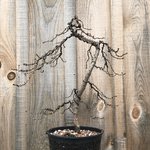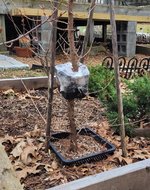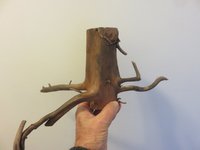Shoshin
Sapling

I wired this larch up today and after speaking with my teacher and contemplating options, I have decided that I want to air layer the top off and use one of the lower branches for a new apex and create two trees.
Does anyone have experience with Air layering Larch. I am wondering when is the best time. I’m in NH zone 5.


